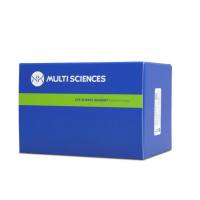【共享】偶然发现一篇“Sending Plasmid DNA by mail”的文献,介绍了一种作者摸索出来的邮寄质粒的方法
丁香园论坛
It is quite common to send small samples of plasmid DNA or other relatively stable material to other researchers. The most convenient method of doing this is to include it in a plain envelope mailed to the recipient at the cost of a first-class stamp. We have observed that it is common practice to pipet a few microliters of DNA into a 1.5-mL microcentrifuge tube, tape the tube to a letter describing its contents, insert the tube into a standard envelope, and trust it to the postal service. While conceptually simple, this plan can be thwarted by automated sortingmachines that slide the envelope through machines that accept letters no thicker than 2 mm. Over the years, we have received empty envelopes containing a hole in the side, punctured envelopes containing a letter with a matching hole, and intact envelopes containing shattered plastic tubes that now fit through a 2-mm gap. Using the DNA that might be clinging to the tube is risky. We usually ask for another shipment, but the mishap delays experiments and further inconveniences both the sender and us. In the USA, padded envelopes are not put through sorting machines and are therefore more reliable, but they are also more expensive and cost more to mail
As an alternative, we use a simple,reliable, and inconspicuous way of sending plasmid DNA via the postal service using a standard envelope. We cut a 2-inch length of Clay-Adams Intramedic thin-walled polyethylene tubing (1.14 mm I.D. ´ 1.57 mm O.D.,
0.215 mm wall thickness) and push 10 mL of the solution to be shipped to the center of the tube using a micropipet, leaving an air space at both ends of the tube (Figure 1). The tube is sealed by holding one end close to a flame and, when it starts to melt, squeezing the soft plastic quickly between the thumb and index finger. The same treatment is then applied to the other end of the tube. The tubing, which does not add significantly to the width of the envelope,envelope, is then taped to a letter describing the contents and placed in the mail. The recipient of the tube simply cuts off both sealed ends and draws the liquid out of the tubing into a plastic micropipet tip. We have never had the tubing fail to arrive intact at its destination.









